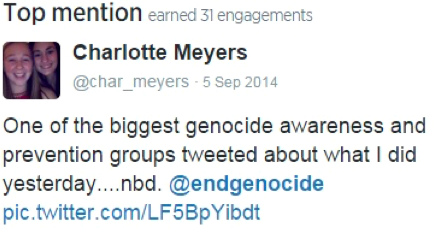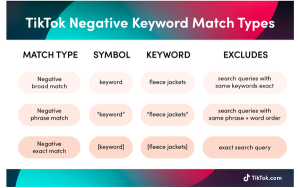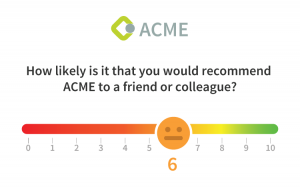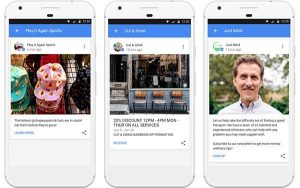Engagement isn’t a trend. It’s how organizations make the greatest strides towards their achieving their goals. Engaging your people is everything.
The problem is that most content strategies with engagement in mind are based on the idea of posting or emailing from a pre-determined timeline. Pushing out planned content is just one way to communicate on social media or any channel.
We partnered with Fission Strategy to bring you a new guide that flips the funnel and shows a powerful new tactic to dramatically increase engagement with this one idea — responding to people as they talk about your work on social media.
Your People Are Talking. Are You Listening? is a how-to guide written for nonprofits that covers a few ideas you’ll be able to put to use right away (which probably isn’t like anything you’re currently doing)

- Why social listening is powerful
- How to activate the people who talk about your work
- Rapid response engagement and how to make the most of trending terms
- What it looks like to activate social media influencers who talk about your issues
First, let’s define what we’re talking about. Social media listening, also referred to as social media monitoring, is the practice of monitoring digital channels to understand the conversations around relevant topics, a specific phrase, word, or organization so you can better engage those people driving the discussion and participating in it.
Anyone who manages social media understands this principle and is already practicing social listening. We’re going to show you how to build on this by making listening more actionable.
SOCIAL LISTENING IS POWERFUL (and why you should care)
Social listening is more powerful than ever because it can be matched with specific data. This means it provides context to your campaigns and your people. For example, it’s possible to monitor how key stakeholders such as donors, activists, alumni, etc. talk about the issues that surround your work. What communications director wouldn’t want to know how their supporters talk about them online?
Social listening is a tactic is worth caring about because it allows nonprofits to engage their base in a way that only the largest brands could afford just a few years ago — in the moment, when your issue is top of mind.
Think about how hard you work to get folks to take action on email. Why not be ready for them on social when they actually talk or share content about your issues?
WHAT SHOULD YOU LISTEN FOR?
Our guide gives a straightforward list of what you should listen for and tips on engaging the people who mention them. For example, when creating your list of keywords to monitor, a common experience is to find the easy terms like campaign hashtags or the name of your organization. The trickier part is to find narrow terms that describe your programs, campaigns, or whatever it is you’re trying to accomplish.
It takes time to create and refine your list if you’re doing it right and here’s why: You need to find broad terms that capture enough mentions but specific enough to reflect your intent. The best terms open the door for you to reply with a call to action related to the term.
As for who you should listen to, it’s most effective when organizations connect their existing data (email list, database, current followers, etc.), with social listening tools because it provides focus and context to the terms being monitored.
It’s about smart segmentation so when your supporters talk about your work online, you’re able to reply in real-time, with the right call to action, on the right channel.
SOCIAL LISTENING IN ACTION
We’d like to share a specific example of how a savvy nonprofit with only four staff leveraged social listening with amazing results.
United to End Genocide (UEG) used social listening to inform their decision on when to ramp up their campaign efforts in Yemen last year. Given organizational capacity and the lack of a clear advocacy ask regarding the conflict, UEG began monitoring the situation through social listening, but didn’t run any advocacy campaigns.
Noticing an uptick in mentions from social listening later in the year, they took action by creating a page dedicated to Yemen related content (http://endgenocide.org/conflict-areas/yemen)
Social listening informed UEG of the spike in Yemen interest in their CRM.

They responded by adding blogs and a Yemen specific landing page on their website, as well as promoted new content on social media.

With limited outreach to social influencers, the campaign began paying off in the same week with thousands of mentions after a just a few of our social influencers who cared deeply about this issue retweeted one of the posts.
Listen to the recorded webinar, Influencing the Conversation, which features how United to End Genocide uses social listening in their campaigns.
WHAT YOU NEED TO MAKE SOCIAL LISTENING ACTIONABLE
The takeaway from this case study is that if a nonprofit with four staff members can find success, you can too with a few key ingredients. The most important factor to making social listening actionable is to 1) work on an issue people actually talk about on social media and 2) have a plan of action when they do talk about key terms.
ENGAGE INFLUENCERS WHO TALK ABOUT YOUR TERMS
One of the greatest advantages of connecting social listening to social data like Klout scores is the ability to see the relative influence of the people who are talking about your campaigns or mission. We talk about three different types of influencers in the guide because it informs how best to approach influencers.
It’s key to know the difference of a VIP and Everyday influencers so you can spend your time wisely and get the most from each mention.
While VIP’s can bring a ton of attention to your campaign, there won’t be as many hiding out in your CRM. The majority of your influencers will have modest reach and Klout score, but as a whole, have substantial network reach. In addition, these “average” supporters welcome opportunities to share your message. The key here is to find them and ask them — but don’t forget to also show your appreciation of them as your social media ambassadors!
IF THEIR VOICE MATTERS, SHOW IT
Showing appreciation for supporters via social is the low hanging fruit of engagement because it’s so easy to show people who mention your terms that you’re both paying attention and value their contributions.

 Here’s how Erik Leaver, Director of Digital Strategy, United to End Genocide practices social love:
Here’s how Erik Leaver, Director of Digital Strategy, United to End Genocide practices social love:
Every day for 30 minutes, listen to what your supporters are saying. Let them know your listening by favoriting tweets, retweet and send DM thank you notes for people sharing our content.
You can’t skip this step and hope to have success with influencer engagement. It’s all about building the relationships. These first small steps of engagement build trust and help establish the relationships you need to have supporters respond to your asks.
In our blog, How Nonprofits Can Show Love on Social Media (https://attentive.ly/social-love/) , we asked some of our favorite nonprofit tech friends to explain how organizations can show social love to different types of supporters such as donors, influencers and activists, and what the love looks like on YouTube, Facebook and Twitter.
SOCIAL LISTENING IS AT YOUR FINGERTIPS
Technology that allows you to to reply to your people in the moment, when they are most interested in getting involved, is available. Know what people are saying on social media and who is influential, so you’re able to boost engagement and drive action when people are most excited your work.
Digital & Social Articles on Business 2 Community
(65)
Report Post







